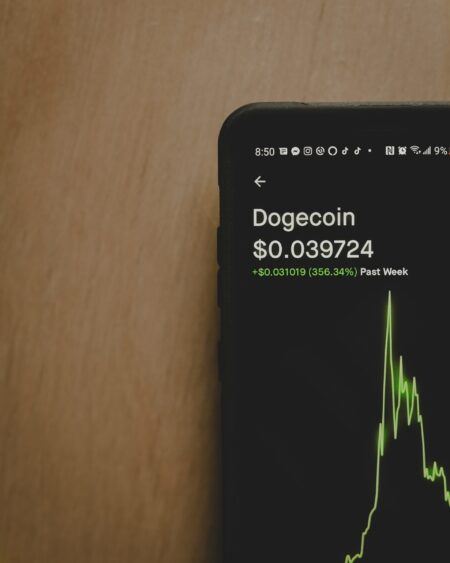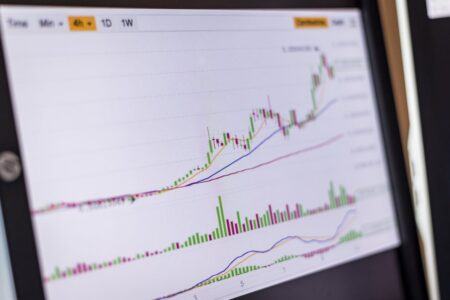On Monday (31 October 2022), days after FinTech firm Ripple celebrated its 10th anniversary, David Schwartz, who is the firm’s Chief Cryptographer and Chief Technology Officer (CTO), gave XRP HODLers an even better reason to celebrate.
Ripple’s 10th Anniversary
On Thursday (October 20), Ripple, the FinTech firm that is using blockchain technology to allow “global financial institutions, businesses, governments and developers to move, manage and tokenize value”, celebrated its 10th anniversary.
Ripple CEO Brad Garlinghouse said that the team celebrated the firm’s birthday at their latest All Hands meeting:
The Evolution of the XRP Ledger
The open-source public XRP Ledger (XRPL) was created in 2012 by David Schwartz, Jed McCaleb, and Arthur Britto; its native digital asset is XRP.
On 27 February 2020, during an episode of “The Ripple Drop” (Ripple’s web video series), Schwartz spoke with with producer/editor Reinhard Cate about the evolution of the XRP Ledger.
Cate started the interview by asking Schwartz how the XRP Ledger started and what its current status is.
Schwartz replied:
“Well, I started working on what we now call the XRP Ledger at the end of 2011; so I’ve been at this for eight [or] nine years… but the changes have been drastic. I mean in the early days all we had was the ability to perform a transaction on a decentralized ledger in just a couple of seconds, and then we started to realize that the properties of the algorithms that we developed allowed us to do things like a decentralized exchange.
“And then we had this idea of allowing people to issue assets and ideas like community credit, and we put all that together into a functional system probably in mid 2012.”
Cate then wanted to know why the robustness of the XRP Ledger is so important.
Schwartz said:
“You have to realize that you’re talking about billions of dollars in a system that doesn’t have an administrator. There’s nobody that you can go to if it messes up, and so reliability is the number one property, and it means that these systems are very slow to develop and evolve.
“In the early days, before I was working on the XRP Ledger and I was looking at Bitcoin, and we sort of had this idea that if there was any new feature, Bitcoin would just adopt it.
“We now know that’s hopelessly naive because any change to a system like this imposes cost on everybody who uses the system. With any other piece of software, a company will release a new version of the software, say Oracle releases a new version, and they’ll say to people who have like mission critical deployments ‘don’t upgrade to the new version, just use the current version, give us a little bit of time, test it whatever’.
“You can’t really do that on a public blockchain — if the rules change, people have to run software with the new rules. You want to ask why these systems don’t move more quickly, why they don’t add features on a regular basis, that’s why.”
What the Ripple CTO Thinks About the Use of XRP Ledger for NFTs
Last November, Schwartz was interviewed by blockchain analyst and Cointelegraph reporter Rachel Wolfson.
Here are a few highlights of what Schwartz told Wolfson about the use of XRPL for NFTs:
“My talk at NFT NYC was mostly about carbon-neutral NFTs with the XRP Ledger and solving the energy consumption problem. Obviously, we aren’t going to solve climate change in the blockchain space, but the least we can do is not make it a lot worse. It’s not a technical problem — we know how to not consume that much energy, it’s just a matter of convincing people to adopt the technologies that are more climate-friendly…
“We were a little late to the party, but not too late. If NFTs are successful, then we are all still early. We initially started to look at how people wanted to use NFTs and realized that a lot of the challenges people were facing were due to the technology being very primitive...
“Part of Ethereum’s low transaction speed and cost is due to the fact that you can build more flexible technologies on the blockchain. Most people who build on the XRP Ledger are doing complex things, but for technical reasons they don’t need these to be right on the ledger…
“We don’t have those capabilities on the XRP Ledger today, but you can mint NFTs. The XRP Ledger also has a decentralized exchange (DEX), and you can issue new tokens. Payments are cheap and fast, so to some extent, it’s a fundamental engineering tradeoff.“
Adding Native NFT Support to XRP Ledger
A Ripple blog post published on 6 July 2022 talked about episode #27 of The Ripple Drop, in which Reinhard Cate spoke to Monica Long, who is the General Manager at Ripple, about NFTs in general and the XLS-20 proposal for adding native NFTs to the XRP Ledger.
Long said:
“The applications of NFTs can extend to lots of different industries, but the core idea is about ownership… The XRP Ledger was the first to enable the tokenization of any form of value on a blockchain.“
As for the XLS-20 standard, the blog post said:
“This XLS-20 standard proposed by Ripple—now up for approval from XRPL validators—makes the creation of NFTs on the XRPL very compact and efficient, reducing any negative impact to the XRP Ledger’s performance and avoiding congestion at scale.
“Monica explains that with XLS-20, developers can create NFTs without the additional security risks and complexities—and therefore room for error—that come with smart contracts since XRPL does not require them to run to accomplish many tasks. With features like minting and auctioning built into the standard, XLS-20 seeks to bring significant ease to the developer’s creation process.“
Ripple CTO Says That XLS-20 Has Been Enabled on XRPL Ledger Mainnet
Yesterday, Schwartz took to Twitter a fantastic bit of news to XRP HODLers:
He went on to add:
“Tokenization is not new to the XRPL, but this presents a key milestone for developers and creators to tokenize any asset and build innovative Web3 projects with utility. The new standard introduces native NFTs on the XRP Ledger to represent unique assets along with efficient, secure operations to enumerate, transfer and hold such tokens. Thank you for the patience and support in making native NFTs on the XRP Ledger a reality.“
In a blog post for developer about this new milestone, Schwartz wrote:
“XLS-20 (the standard for XRPL NFTs) presents a considerable milestone for developers and builders utilizing the XRPL for their NFT projects and apps. The new standard introduces native non-fungible tokens (NFTs) on the XRP Ledger to represent assets that are each unique along with operations to enumerate, transfer and hold such tokens. What makes this all possible is, of course, the ledger’s built-in tokenization functionality and performance advantages..
“Blockchains are hard to change for very good reasons. RippleX engineers took time to build the right standard with a no-smart-contracts approach, making NFTs on the XRPL less vulnerable (e.g. bridge hacks), less congested and less expensive than other chains…
“XLS-20 truly has the potential to cement the XRPL as the chain of choice for unlocking functional NFT utility.“








